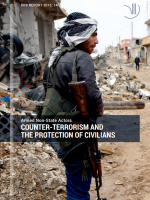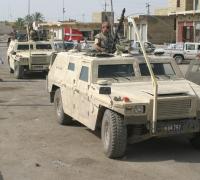Maximizing the protection of civilians in conflict
Over the last many years International Humanitarian Law (IHL) has increasingly regulated the behaviour of armed non-state actors with regard to the protection of civilians. At the same time, counter-terror measures have increasingly addressed such conduct, as well as controlled the extent to which other actors may interact with armed non-state actors. Yet, there is a fundamental contradiction between these regulatory regimes.
This report takes a case study approach to examine the conundrum facing policymakers and, not least, state militaries, when navigating these policy regimes in Iraq and Syria. It analyses two prominent armed non-state actors and their acceptance of these regulatory regimes; the People’s Protection Units (YPG) and Islamic State. The report concludes that it is time to consider strategic interoperability of international humanitarian law and counter-terror regimes in order to maximise the protection of civilians.

